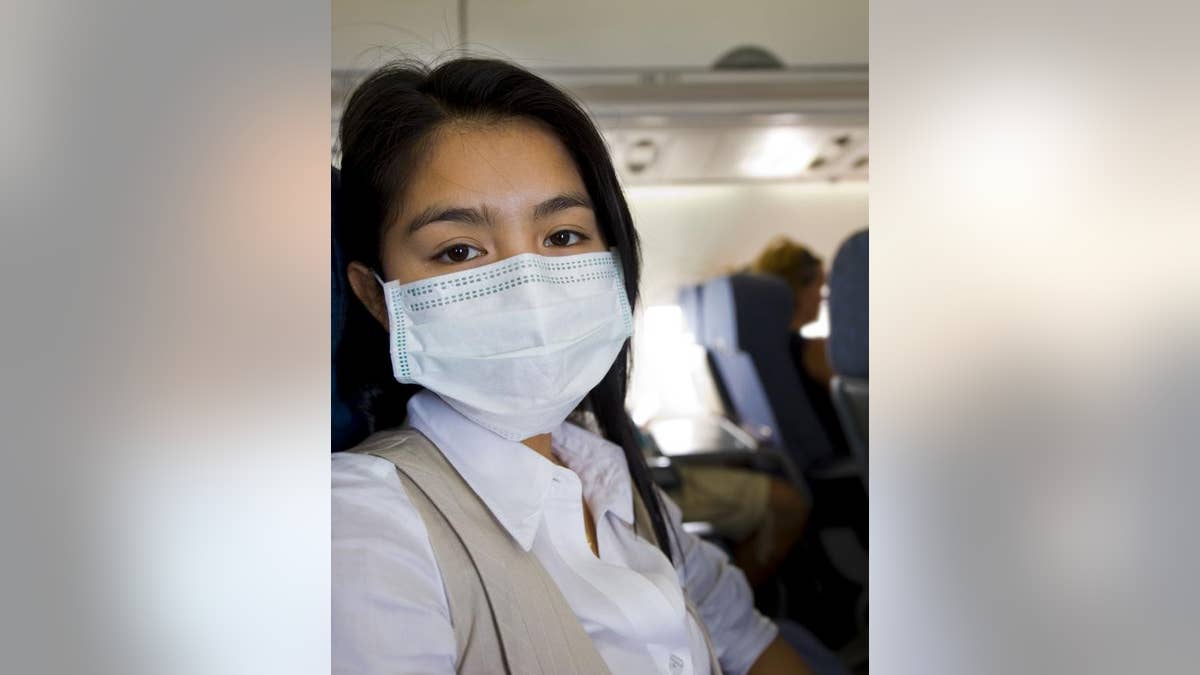
There you are, cruising along at 37,000 feet when suddenly you hear it: a big, fat, wet sneeze from the sick airline passenger behind you.
If you were on a train, you'd move to another car. But you're not. You have no choice but to stay in your assigned seat and resign yourself to catching whatever illness your fellow traveler just expelled from his sinuses.
But what else can you do? With so many people aboard a single aircraft, it's inevitable that someone's germs are going to enter your system one way or the other, right?
That's pretty much correct, at least according to Dr. Robert Lahita, a professor of medicine at University of Medicine and Dentistry of New Jersey and the author of 16 books and 150 publications on the subject of autoimmunity.
“These are the seasons where everyone has all kinds of respiratory infections,” explains Dr. Lahita, who recently endured an especially long flight from Abu Dhabi. “I came off, and about a day later, I was coughing and sneezing," he said. "And that’s inevitable."
The problem, as Dr. Lahita outlines, is the particles that are expelled during a cough or sneeze. "Throughout a long flight, [sick] people are sneezing like, 16, 17 times, and those droplets are circulated through the plane, like a mist," he says. And although Lahita is aware of the "fairly sophisticated" filtration systems aboard modern aircrafts, he "doubt[s] these infectious droplets are being filtered out." Furthermore, Lahita says that the airborne pathogens from a nearby passenger could potentially find their way into your respiratory tract before they reach the filtration system.
Dr. Charles Gerba, on the other hand, believes that the recirculated air on an aircraft isn't as bad as you'd imagine. Dr. Gerba (who is sometimes referred to by his nickname of "Dr. Germ") is a microbiologist who has published over 400 articles on environmental microbiology and pollution science, and he says that airplanes "are always taking in fresh air from the outside by using compressors," and that much of that air circulates through HEPA filters to remove harmful particles. "Studies have shown you only have to worry about catching a cold on a plane if the person next to you or in front of you has one," he adds.
But even if they disagree about the transmission of airborne germs on an aircraft, both Dr. Lahita and Dr. Gerba say passengers should be concerned about certain other aspects of travel — namely, the tray tables, headrests, armrests and bathrooms.
Lahita points to these "fomites," or surfaces capable of carrying infectious organisms, as a major culprit in getting people sick on airplanes. "[They] are picking up infections from personal skin contact from people touching headrests and things like that,” he explains. And though Lahita rarely takes this precaution himself, he suggests that wary passengers use a cleansing towelette or disinfecting wipe on these surfaces.
Gerba, too, warns against infected surfaces, like the handle on the overhead bin or the built-in tray table ("Nobody ever disinfects it — we have found influenza virus, norovirus and MRSA on them") but claims that airplane bathrooms are the biggest sources of pathogens. "Worst thing on the plane is the toilet — germiest by far," says Gerba, adding that there are usually at least 50 people per airplane restroom.
“But you’re not doomed," assures Dr. Lahita. "You’re just going to have to accept the fact that you might be getting sick.” And although Lahita acknowledges that it's possible for people to catch illnesses elsewhere and simply blame it on a recent travel experience, he says that the cold and flu season is especially risky for passengers. “When you’re in close quarters," Lahita says, “you’re really at the mercy of the people that are on the plane.”
Dr. Gerba, however, has one final recommendation for those who can't avoid airplanes this holiday season. "Best thing to do is use a hand sanitizer, and do not use the toilet," he says.




















